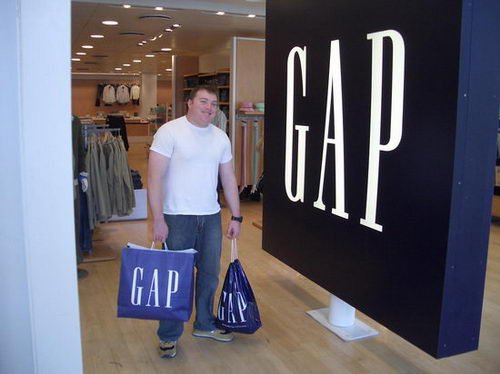
Gap Incorporation has announced its plans to close more than 20% of all Gap stores in US.
The retailer, which runs the Gap, Old Navy and Banana Republic chains, plans to close 189 of its locations, which means 21% of Gap stores in the U.S., by the end of 2013.
The announcement comes as President Barack Obama’s push for the Made in America brand saw him visit a GM plant in Orion, Michigan, hailing a new trade agreement with South Korea that will see the manufacture of subcompact cars in the U.S.
However, while the Made in America stamp of approval is creating thousands of jobs in the motor industry, Gap‘s losing streak will see the loss of thousands more in the retail sector.

Like many U.S. companies, Gap has been looking overseas for growth as Americans continue to cut back on spending during the down economy in the U.S.
Gap, which is the largest U.S. clothing chain, said it plans to triple the number of its stores in China from about 15 by the end of 2011 to roughly 45 by the end of 2012.
Gap sales in the U.S. have eroded considerably since it drove America’s love of khakis and all things business casual in the 1990s because of growing competition from specialty retailers like Abercrombie & Fitch and cheap chic merchants such as H&M.
In May 2011, Gap design director Patrick Robinson, was dramatically fired, with immediate effect, and the store was knocked from the top position as the world’s biggest fashion chain by Spanish behemoth Zara.
Gap’s overall revenue has fallen 3% over the last quarter, as has Banana Republic’s, while the revenue at Old Navy, which sells low-priced clothing, remained flat.
The changes are related to a Gap’s previously stated goal of reducing its overall square footage in the U.S. by 10% from 2007 to the end of 2013, while roughly doubling revenue from outside of the U.S. to 30% by the end of the same year.
Glenn Murphy, Gap’s CEO, said in a statement:
“The combination of our global strategy and formidable growth platform puts us in a strong position to expand our reach into the top 10 apparel markets worldwide.”
“In North America, we’re taking a number of steps to improve sales in the near-term, and I’m confident that with a strong management team in place, we’re well positioned for sustained growth across the business.”
In order to improve its profitability, Gap has closed or reduced the size of stores over the past few years. In 2008, the company announced plans to reduce overall square footage in the U.S by primarily focusing on cutting the number of stores. But Gap never gave details on how many stores that it planned to close.
On October 13, Gap officials offered more details to analysts gathered in New York for its annual meeting. It plans to have closed 34% of its namesake stores between 2007 and the end of 2013, not including Gap Outlet locations. After the reduction, Gap will have 700 stores left by the end of 2013, down from 1056 in 2007.
“Over the next 26 months, we’ll look store by store at our specialty fleet and determine which stores meet the standards we’ve set for our brand,” said Art Peck, president of Gap North America, who took over the helm of the brand in February.
Gap also said it plans to keep the same number of Old Navy stores in North America, but is cutting down the size of each store. Old Navy had decreased its square footage by 8% to 18.5 million since 2007. It plans to add 50 new Gap Outlet stores by the same period, which will leave 250 stores by the end of 2013.
The company said that it is testing new merchandising ideas and marketing to get shoppers excited. Gap Kids has collaborated with designer Diane von Furstenberg to design a children’s line to be shipped to stores next spring.
Meanwhile, the first Gap store in Hong Kong will be opening in a few weeks, as is the first Banana Republic store in Paris later this year. Gap also plans to expand Old Navy outside of North America to Japan within the next 18 months.
Gap’s shares rose 11 cents, to $17.96 per share after the information was released in New York.